Evolution of Chromatography: One Scientist's 51-Year Journey
LCGC North America
Industry veteran Thomas Beesley takes readers on a tour of his experiences in chromatography.
Chromatography today is the most versatile, comprehensive and pervasive technique used in analytical chemistry. From the beginning of the field of chromatographic separations, some say with Tswett in 1903, periods of discovery have occurred followed by extended voids. Then in the 1950s, a series of rapid developments of various chromatographic techniques began, some occurring in sequential order and some concurrently. We could call these peaks of activity by the tool that emerged: the Age of Paper Chromatography, the Age of TLC, the Age of GC, and the Age of HPLC, to our current situation, in which we have reached the Golden Age of Analytical Chemistry with all these wonderful tools of outstanding performance at our disposal. I will take you on a tour from my first experience with crude low-pressure columns in the late 1950s, to my activities in expanding thin-layer chromatography (TLC) capabilities by founding Quantum Industries (which led to quantum advances like preadsorbent, channeled, and reversed-phase TLC, and dry column chromatography), then on to lessons learned in high performance liquid chromatography (HPLC) and gas chromatography (GC) and finally to Advanced Separation Technologies, Inc. (Astec) in 1983, the company I founded to pursue chiral chromatography, the ultimate challenge to understanding the processes of separation. In retrospect, it is astonishing to realize that all this occurred in one lifetime, one busy lifetime.
From the beginning of chromatography, with the work of the Russian Tswett (1) in 1903 demonstrating adsorption as a separation technique, this technology has gone through numerous changes, from rapid stages of development to extended barren times. It wasn't until 1941 when Martin and Synge (2) gave us partition chromatography and the first use of silica gel as a separation media. Who remembers the subsequent days of paper chromatography when Consden, Gordon, and Martin (3) gave us the first rapid method for amino acids analysis? A "rapid" method is certainly as relative a concept as time. Dynamic progress in developments did not begin until the early 1950s, just as I entered the picture, which made life particularly interesting for me.
My career in chromatography really began in 1959 in the Biochemistry Department, at St. John's University, Jamaica, New York, in pursuit of my Master's Degree. My research project was the isolation and structure determination of a unique pigment in Tricophyton mycelium, commonly known as athlete's foot fungus. The first chromatographic column I ever faced was a 48 in. × 3 in. glass column that we packed with kieselguhr (diatomaceous earth) to separate an extract of the lab-grown and dried Tricophyton mycelium into various fractions. The pigment fraction was my project. It became for me a learning process on how to separate this crude fraction of pigments into pure components. That effort required a different set of adsorbents and solvent combinations. Thus began my indoctrination into elutropic or solvent elution strengths and adsorbent strengths described by Strain (4) and the true magic of chromatography. I can still remember the excitement of being able to uncover the secrets of this "human plague" with this wonderful tool. The major pigment turned out to be a unique dinaphthylquinone that also gave me my first experience with crystallization but the real lesson was my experience with low-pressure column chromatography and its manipulation.
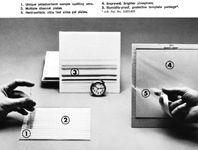
Figure 1: Quantum TLC system.
After graduation, I had a short nine-month stint as a biochemist at Bristol-Myers studying the transport efficacy of buffered versus nonbuffered aspirin to cross the blood brain barrier, which did get published with my name spelled wrong (5). My real immersion into this field of chromatography occurred when I joined Merck & Co. (Rahway, New Jersey) in late 1962. I was invited by a contact at Merck to join a new group that was being set up and referred to as Exploratory Chemistry. My focus in this new enterprise was to research and further develop new separation tools that would be used in the pursuit of these new areas of corporate research. The most exciting project was the area of peptide research: fancy that for 1963! It was then I began to become deeply involved with a recent commercially available analytical tool, TLC. Two companies offered this product in 1961, Analtech of Delaware in the U.S. as a gypsum-bound layer, and E. Merck in Germany as a polymer-bound layer. These commercial products were the result of the extensive application work by Miller and Kirchner (6) in the early 1950s and Stahl (7) in the mid-1950s, whose work was based upon the concept work of Ismailov and Schraiber (8) in 1938, having developed the first so-called TLC (actually two sandwiched plates), Meinhard and Hall (9) in 1949, and the 1954 work of Reitsema (10) who developed the closest to what we know today as TLC.
What TLC offered for the first time was real development speed, excellent sharp separations (unlike paper chromatography), and a new level of sensitivity. It was a technique applicable to both volatile and nonvolatile compounds and offered solutions to difficult problems. The first intense project in this new group was the identification, purification, and structure determination of the peptide, thyrocalcitonin, followed by its synthesis. The blood-pressure regulators angiotensin I and II were to follow. The leader of that project at Merck was Dr. Ralph Hirschmann, who today has an ACS award in his name, for those demonstrating proficiency in peptide chemistry.
While TLC plates at that time were of dubious and variable quality (layers falling off the glass, thickness variation, and so forth), they offered remarkable advances in separation with the added advantage of being able to run other chemistries on the surface to further characterize a compound or a separation and, therefore, were not limited by detector capabilities. Detection could be very specific to the compound of interest, using appropriate chemical reactions, or very broad through acid degradation. It was shown to be very sensitive, down in some cases to nanogram levels. In addition, we surmised that using the same concept in a glass column would result in fast separations on a preparative basis, and thus the dawn of dry column chromatography began. The ultimate test for me and these new tools came when I was asked to run an enzyme digest on 1 mg of thyrocalcitonin that from an amino acid analysis had cleavable bonds after aromatic groups with chymotrypsin. This would result in three potential fragments that when purified as smaller fragments could be further deconstructed with Edman degradation. The day I was to run the column I was told the value of the 1 mg was $1 million, not small R&D change in those days. Needless to say, we were successful in the separation (11), and I still have the column in my possession today, my trophy. To me it was like a World Series home run baseball. One fragment could not be deconstructed as it had a cystine bridge blocking the Edman degradation. However, I was now hooked for life in the world of separation technology. In fact, I became so enamored with TLC and its potential that I founded Quantum Industries in 1967 with a high school friend to manufacture TLC plates and accessory tools of the highest quality possible. After all, it was an analytical technique requiring the best tools, care, and precision. What I knew about chromatography at that point could fill a book, but what I knew about business could be written on a post-it note.
As Merck & Co. was my greatest learning experience in pharmaceutical research, Quantum Industries became my greatest learning experience in innovation and business entrepreneurship. Every step of the manufacturing process was a challenge and discovering solutions was exciting. It is interesting to note that on the day we went to J.P. Morgan on Wall Street to find capital, the gentlemen seeking funds just ahead of us were the founders of what would become Thermo. We both received our requested funds that day and I wish I could say we both achieved the same degree of success. The innovation in this enterprise included discovering the float glass system from Europe that gave us flat thin glass of high strength, the conveyor spray coating system and its attended particle discharge system, the online infrared drying system (until the local airport shut it down and we had to resort to controlled convection oven drying), and the design of high-volume glass cutting equipment. Coming from an R&D background, we tackled many of the problems associated with TLC use. In our labs (and ultimately in high-volume production), we created the first preadsorbent inert polymer-bound silica layers (12), the first 19-channeled plates with and without preadsorbent layers (13), and the first reversed-phase plates for TLC (14). These are now all standard products in the field. The plates were also individually packaged in a vacuum Surlyn wrap holder with a guide for setting the point of application and marking solvent front, in addition to keeping the plates free from contaminants during storage and from a lab's environmental exposure. Lots of thought and effort went into every step of the process and the products ultimate use. To bring a bit of humor to all who worked on this project, we bought a velvet pillow to deliver the first set of plates from production to packaging.
Not all projects were successful, however, and one in particular resulted in unintended consequences. We found a phosphor, a beautiful brilliant blue that quenched from 254 nm to 366 nm so compounds adsorbing at both long and short wavelengths could be visualized. The problem was that laboratories using liquid scintillation counting had backgrounds that were off the scales. We had to dismantle the entire plant to remove every trace of this phosphor. This was a good idea gone awry! Our success was slow but steady and encouraging. The round of seminars touting the benefits of these products led to many delightful long-term international relationships. An appropriate example would be the contact I received from someone who would become a friend, the founder of Avanti Biochemicals, Dr. Walt Shaw. He was in graduate school at the time and the preadsorbent layers allowed him to run 19 enzyme reactions in the preadsorbent area and then dry the plates and run the analysis (no transfers, no losses) with speed, sensitivity, and selectivity. He claims it saved him months of time and led to an early completion of his doctoral thesis. Other significant applications included the lecithin/sphingomylin assay for fetal lung maturity as well as other phospholipid analysis, not easily done by column chromatography. In fact, we ran races with column technology for separations of sterols, steroids, and clinical amino acid deficiencies and always won based upon speed and sensitivity.
With the Vietnam War in full force, Armed Services drug screening became a major global issue and in the U.S. especially. In response, we developed large-scale screening systems for the analysis of 20 alkaloids and their metabolites and 15 barbiturates and other acidics in urine.
We appropriately named the project the Golden Flow! A manual of instruction had as its covers the actual representation of the separations as seen in Figure 2, with complete work-up procedures inside. In addition, I developed and patented a system for extracting 10 urine specimens simultaneously.
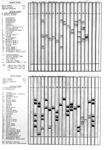
Figure 2: Developed TLC plates for drug analysis.
We attempted to develop a dry column automated elution system based upon TLC data with the help of Beckman in California. The concept was sold to Beckman but was never pursued. This was 1969! The big lesson and the reason I mention it now to all the entrepreneurs out there, is to make sure the market is ready for your ideas — they can be too early.
Burdened with debt from heavy investments in capital equipment and R&D, in 1977, I sold Quantum Industries to Whatman, Inc., which is now part of GE Healthcare Life Sciences Ltd. At the time, I joined Whatman as Vice President Technical and General Manager of the TLC Division. This included overseeing the technical team for the manufacturing and R&D of the cellulosic ion-exchange facility in Maidstone, UK; acting as plant manager for the TLC operation in Fairfield, New Jersey; and receiving my first real introduction to HPLC at the Boonton Technology Center in Boonton, New Jersey. Quality Assurance/Regulatory Affairs Director for the entire company was also on the list. If the job had a technical term in it, I got the job. I remember walking into the Boonton facility and seeing rows of boxes of stainless tubes on the floor. I was to find out they were rejected columns from a high reject rate and were punctuated by a remarkable backlog of orders. Thus began my career in HPLC. At this time, HPLC was just beginning to develop toward the superb technique it is today with changes like reductions in particle size, better particle classification, improved bonding chemistries, and so forth. A good part of my education in HPLC came from Dr. Ray Scott, one of the early developers of the instruments, techniques, and theory for HPLC. The first thing to promulgate at the Technology Center was that quality control should begin at step 1, not step 10. The QC tests were extensive and labor intensive. We went to Hewlett-Packard and had them construct the first multi-input computer automated quality system built on a rack panel some 6-ft high. Whoa, has technology come a long way! It was also my first foray into making silica, spending many hours, long nights, and weekends shooting for the ultimate. One set of specs solved some problems but created others. It was obvious that more than one type of silica was needed. I convinced Whatman to buy Cowles Technology, a grinding and classification company in Worcester, Massachusetts, and with it some independence from the poor quality, variability, and often slow delivery available in the market for silica at the time. We scaled up media manufacturing to 200-L reactors and installed a computerized quality control system. We did end up with excellent TLC media and improvements in Partisil (the Whatman HPLC silica trade name). We even had methods for converting from HPLC column separations (Partisil-5 ODS) to TLC analysis (KC18) by correlating Rf to k in reversed phase chromatography (k = 1 – Rf/Rf with >99.5% accuracy).

Figure 3: Extraction unit, U.S. Patent No. 3,767,365.
As the activity slowly settled down to a routine level and the design and construction of a new HPLC facility was in place now in Whatman's U.S. headquarters, Clifton, New Jersey, I wanted more R&D dollars to pursue more opportunities in quantitation and application areas. Whatman had other ideas for the money and was no longer interested in expanding the separations business. One day, an invitation came that would change my life: I was invited to participate in the first international chromatography meeting, to be held behind the Iron Curtain in Segred, Hungary. There would be invited speakers from Russia, from the Eastern Block and from the U.S., including me.
Thus began my truly international career in chromatography. I could write a whole story on that venture alone, like the stressed kidneys on the bus ride from Budapest to Segred on a bus with no suspension, or the high-cholesterol diet of beans and fat. The highlight of that trip was meeting Dr. Daniel Armstrong, at that time Professor of Chemistry at Georgetown University, Washington, DC. He so intrigued me with his creative thinking that by the time we flew home, we had agreed that I would start a company with his ideas on advanced separation tools and my commercial experience. At the meeting in Segred, Dr. Armstrong's presentation was on the use of cyclodextrins in the mobile phase using TLC as the tool to resolve a variety of structural, positional, and geometric isomers and enantiomers. Little was known at the time about this strange natural molecule, much less how it worked in chromatographic separations except for its use as a molecule that trapped (included) lipophilic molecules (water insoluble) and how it made them water soluble. In Japan, it was used extensively to mask bad taste, such as that of vitamins in animal feed. From Dr. Armstrong's presentation, it was obvious that as the concentration of cyclodextrins increased, resolution increased but that the limited solubility of the cyclodextrins limited its application range. Bonding was the obvious solution to control that parameter. Thus began my next venture into the field of separation technology when I founded Advanced Separation Technologies, Inc. (Astec) in Whippany, New Jersey, in 1983. The name evolved from the concept that we would be pursuing new avenues of separation in all related fields, including TLC, HPLC, GC, and sample preparation. A close ally in the development of Quantum, Vicki Sutter followed me to Whatman and now with international experience from the marketing department of Whatman, she became my right hand in the development of Astec. It was at this time that another activity was gaining real momentum in the field of chromatography, the area of resolving enantiomers. The finding of the detrimental effects of an unwanted enantiomer of thalidomide in the early 1960s brought all of European pharmaceuticals into question with these three-dimensional structures called enantiomers, common in the synthesis of many pharmaceutical products. So began my next step in the field of chromatography: the development of chiral separation tools. The major problem was that chiral stationary phases at the time were based upon normal-phase conditions, creating problems for certain stages of drug development, especially clinical.
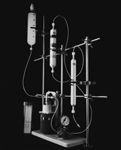
Figure 4: Dry column system.
For the next couple of years, under the watchful eye and directing hand of Professor Armstrong, Astec developed bonded phases of the three most common cyclodextrin molecules, alpha (six glucose units), beta (seven units), and gamma (eight units), and worked on their application (15). This was a time of intense learning for us as well as teaching the market, a really tough and expensive job that took me around the global scientific community lecturing on what we were learning in our R&D labs and from Dr. Armstrong's lab. At one point, I could give a complete full day of lecture in my sleep. The limitations of this technology to separate a broad range of molecules only of low molecular weight with rather short, typically chiral side chains became obvious and work began to expand the concept through derivatization of the sterically fixed hydroxyl groups on the surface of the cyclodextrins either before or after bonding. What was most important with this technology was some degree of predictability based upon a well-defined cyclodextrin structure and the identifiable points and distances of interaction. Between Dr. Armstrong's laboratory and his army of graduate students and Astec's laboratory, we generated volumes of data that slowly brought others into the market. Today, well over 40 companies around the world produce some type of cyclodextrin stationary phase. Given what Astec learned about derivatization and the importance of the 2- and 3-position hydroxyl groups and the degree of substitution on resolution outcomes, it is safe to say that not all cyclodextrin phases are the same even with the same ligand. Applications ran the gamut from nonchiral, small organic acids, positional, geometric isomers, syn- and anti- forms, to closely related sterols, and many other applications. Separation of enantiomers, however, was the big target, and certain clinical applications became possible that eluded other techniques. Today there are over 200 publications based upon the CYCLOBOND series.
Simultaneously, Dr. Armstrong was developing stationary phases for capillary GC based upon these cyclodextrins with derivatives more appropriate to the GC mechanisms. Once again, I had to update my education in this field to be able to articulate to users not only the mechanisms at work but the rationale for these phases. Hands-on for me was a must, especially when you faced analysts in the field! The one phase developed at Astec, the trifluoroacetic acid derivative, has become a lead product in many chiral GC applications, especially for chiral building blocks.
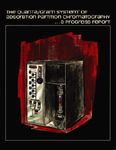
Figure 5: Proposed automated dry column system.
The chiral separation market literally exploded as more countries established regulations on the development of chiral molecules. The limitations of the current chiral stationary phases (CSPs) in HPLC kept everyone, especially Dr. Armstrong, busy finding new, more expansive ligands for primarily chiral applications. When he announced to me the use of the macrocyclic antibiotics vancomycin, teicoplanin, and ristocetin A as chiral selectors I was at first apprehensive seeing as this might lead to limited applications, especially when it came to preparative uses. It turned out that the multiple links of these ligands to silica and the specific temperatures used to couple them made them extremely stable and unlikely to shed even fragments. These complex molecules had not only a variety of chiral sites for hydrogen bonding but chiral anionic and cationic sites. In addition, hydrophobic pockets added to the complexity. It became obvious that the way to control these interactions was the use of mobile phase design. Again came the learning process both for us as a company and to then educate the market, but by now we had an extensive global system of sales outlets that led to the most ambitious seminar program in our history. One trip alone was measured at 15,000 air and ground miles during which my wife, who will not let me forget it, met me at Newark Airport to change suitcases with me on at least one trip. The CHIROBIOTIC V phase was awarded the 1995 R&D Award as an outstanding advance in chiral separations. The technical story of this learning process was published in a joint effort with Dr. Ray Scott (16). There are now over 150 publications based upon the CHIROBIOTIC phases.
One of the major highlights of this business has been the international meetings, in particular those of HPLC and Chirality. My first memory was the 1977 HPLC meeting organized by Professor Huber in Salzburg, Austria. The meeting began with a three-piece ensemble playing Mozart. Then Professor Huber announced after his welcome that the official language of the meeting would be Broken English. The quality of the presentations was outstanding and the gala in the castle of Franz Joseph was unforgettable. I said to myself, I am in the right business! By far, the most memorable meeting was the Symposium on Chirality organized by Dr. D.W. Armstrong in Cancun, Mexico. This meeting was in the early days of chiral separations and the stated positions of leaders in the field for various technical approaches was intense. Evening sessions scheduled for 8–10 p.m. went on until midnight over discussions as to the validity of the three-point interaction model to separate chiral molecules. We still talk about many of that meeting's events today.
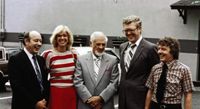
Figure 6: Quantum and friends.
Having established a range of technologies in Astec's chromatography arsenal, the need for global distribution and greater market coverage became apparent. So on October 6, 2006, Astec was sold to Sigma-Aldrich and was incorporated into the separations group at Supelco in Bellefonte, Pennsylvania. I retired from active duty and with my background, I had the opportunity to publish summaries of what I had learned in this field in two book chapters (17,18) and the ongoing update of chiral technology for the magazine LCGC (19). It also has given me the opportunity to consult through Chiral View LLC, all of which has been very satisfying given my long run in chromatography.

Figure 7: Chromatography symposium in Segred, Hungary.
The dynamic and simultaneous advances in HPLC silica, derivatization, column packing, hardware design, and instrumentation all came together finally, to make chiral separations, a once onerous task, a routine methodology. If you look back, however, it is easy to see it was built on the backs of many dedicated and resourceful chemists both in academia as well as in companies large and small. The reviews I have done for LCGC over the last few years attest to the progress that has been made and continues to be made in this once very difficult field. I can say without hesitation that it has been a fantastic way to spend a career. The problems that have been solved, the discoveries made, the advances in medicine, environmental analysis, food production, and forensic assays are indeed satisfying to one who has played a part.

Figure 8: The fabulous Astec Group.

Thomas E. Beesley Thomas E. Beesley Founder and former CEO, Quantum Industries, manufacturer TLC. Designed pre-adsorbent and channeled TLC. Sold to Whatmann 1978. Founder & CEO, Advanced Separation Technologies Inc, manufacturer chiral HPLC; Cyclobond & Chirobiotic lines and chiral GC; Chiraldex phases. Sold to Sigma-Aldrich 2006. Currently lecturer, expert witness, contract problem solver with speciality in separation of chiral molecules.
References
(1) M. Tswett, Proc. Warsaw Soc. Nat. Sci. Biol. Section 14, No.6 (1903).
(2) A.J.P. Martin and R.L.M. Synge, Biochem. J. 35, 1358 (1941).
(3) R. Consden, A.H. Gordon, and A.J.P. Martin, Biochem. J. 38, 224 (1944).
(4) H.H. Strain, Chromatographic Adsorption Analysis (Interscience Publications, Inc., New York, 1942).
(5) V. Cotty, F. Zurzola, T. Beezley (akaT.E.Beesley), and A. Rodgers, J. Pharma. Sci. 54(6) 868–870 (1965).
(6) J.M. Miller and J.G. Kirchner, Anal. Chem. 23, 428, (1951).
(7) E. Stahl, Pharmazie 11, 633 (1956), Chemiker-Ztg. 82, 323 (1958), Parfumerie u. Kosmetik 39, 564 (1958), Pharmaz. Rdsch 2(1), (1959), and Angew. Chem. 73(646) (1961).
(8) N.A. Izmailov and M.S. Schraiber, Farmatsiya No. 3, 1 (1938).
(9) J.E. Meinhard and N.F. Hall, Anal. Chem. 21, 185 (1949).
(10) R.H. Reitsema, Anal. Chem. 26, 960 (1954).
(11) T.E. Beesley, R.E. Harman, T.A. Jacob, C.F. Homnick, R.A. Vatali, D.F. Veber, F.J. Wolf, R.Hirschmann, and R.G.Denkewalter, J.Am.Chem.Soc. 90, 3255 (1968).
(12) T.E. Beesley, Amer. Lab. 4(10), October 1972.
(13) T.E. Beesley, Amer. Lab. 13(8), 35–43, (1981).
(14) Chemically Bonded Reversed-Phase TLC, Advances in Thin Layer Chromatography, T.E. Beesley, Ed. (John Wiley & Sons, Inc., 1982).
(15) Amer. Lab. 17 (1985).
(16) Chiral Chromatography, Separation Science Series (John Wiley & Sons, New York, 1998).
(17) J-.T. Lee, J. Liq. Chromatog. Rel. Tech. 32, 1733–1767 (2009).
(18) Description and Evaluation of Chiral Interactive Sites on Bonded Cyclodextrin Stationary Phases., Chiral Recognition in Separations Methods (Springer, 53–76, 2010).
(19) T. Beesley, Advances in HPLC Systems Technology Supplement, LCGC No. Amer., April 2010.

Altering Capillary Gas Chromatography Systems Using Silicon Pneumatic Microvalves
May 5th 2025Many multi-column gas chromatography systems use two-position multi-port switching valves, which can suffer from delays in valve switching. Shimadzu researchers aimed to create a new sampling and switching module for these systems.
New Method Explored for the Detection of CECs in Crops Irrigated with Contaminated Water
April 30th 2025This new study presents a validated QuEChERS–LC-MS/MS method for detecting eight persistent, mobile, and toxic substances in escarole, tomatoes, and tomato leaves irrigated with contaminated water.
Accelerating Monoclonal Antibody Quality Control: The Role of LC–MS in Upstream Bioprocessing
This study highlights the promising potential of LC–MS as a powerful tool for mAb quality control within the context of upstream processing.
University of Tasmania Researchers Explore Haloacetic Acid Determiniation in Water with capLC–MS
April 29th 2025Haloacetic acid detection has become important when analyzing drinking and swimming pool water. University of Tasmania researchers have begun applying capillary liquid chromatography as a means of detecting these substances.

.png&w=3840&q=75)

.png&w=3840&q=75)



.png&w=3840&q=75)



.png&w=3840&q=75)










